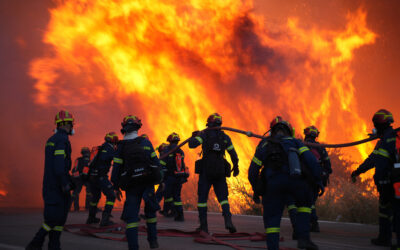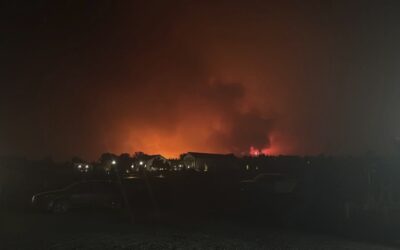A very active wildfire season is expected

National Interagency Fire Center
Warm weather continued in March in most of Canada south of the 60th parallel, along the western Arctic Ocean coast,and across some of the Arctic islands, while slightly below normal temperatures dominated in the Territories. Dry conditions also occurred in southern parts of the four western provinces, much of Ontario, and Quebec,north of the St Lawrence River. A strip of Ontario between Lake Superior and Hudson Bay had above normal precipitation, as well as northern parts of the western Provinces and the Atlantic Provinces. This left much of the southern parts of the provinces with bare ground or lower than normal snow cover for early April, although at the time of this report, a substantial snow event is occurring in Manitoba.While La Niña continues this spring, much of the winter reflected a weather pattern reminiscent of El Niño. A weak North Atlantic Oscillation and moving into the negative phase of the Pacific Decadal Oscillation may also be contributing to the inconsistent spring weather.
Large fire activity increased across the United States (US) in March, especially in Southern, Eastern, Rocky Mountain, Northern Rockies, and Southwest Geographic Areas. Dry and windy conditions led to short duration wind driven large fires across these areas periodically through March. Snow water equivalent (SWE) across much of the western US and Alaska remains near to above normal with the highest values in Washington and northern Oregon and most areas in Southwest and through much of the Sierra observing below average SWE values according to latest data from the National Resources Conservation Service (NRCS). Arizona, New Mexico, Utah, and Nevada had their driest April –March 12-month period on record (126 years) with California having its second driest.
Above normal significant fire potential is expected across the northern Plains into northern Minnesota through April into early May. Additionally, much of the southern Plains is forecast to have above normal significant fire potential through May before green-up. Recent and continuing dry weather in Florida is likely to contribute to above normal significant fire potential through May with conditions returning to normal by late June. The southwest US is forecast to have above normal significant fire potential during most of April through June before the North American Monsoon arrives in July. Above normal significant fire potential will expand northward into the Great Basin and Rocky Mountain Geographic Areas May through July. Additionally, central Oregon and central and southeast Washington are likely to have above normal significant fire potential beginning in June with portions of the Coast Ranges, Sierra, and Cascades in California increasing to above normal by July.
Forest fire activity continues to be high and remains above 2017-2020average. The dry and warm conditions have generated significant fires across the Mexican Republic.Precipitation was below normal during fall and winter, except for the Yucatán Peninsula and in the eastern part of the Isthmus of Tehuantepec while temperatures were near normal. Drought is likely to continue across much of Mexico into summer. Significant fire potential will be above normal through May across large swaths of Mexico, especially in the mountainous and forested portions of the country.A very active wildfire season is expected. READ MORE




